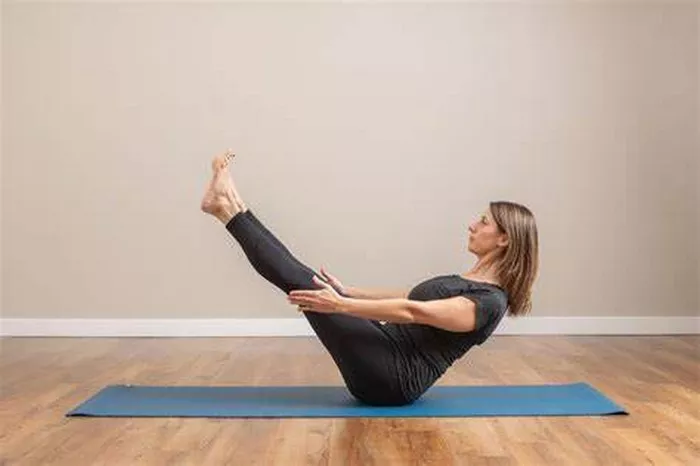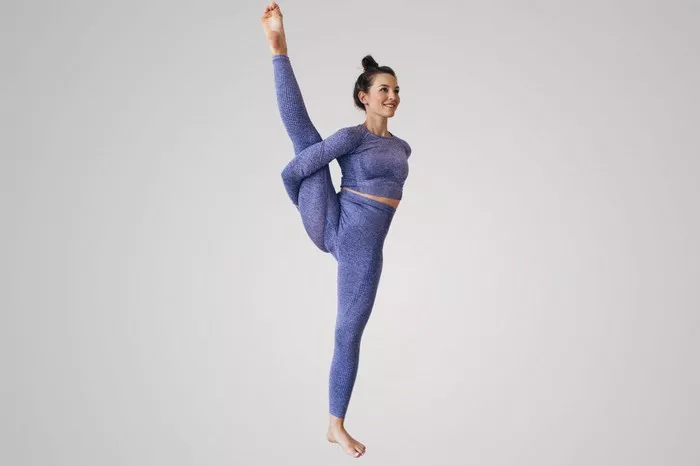Yoga is a transformative practice with a wide range of physical, mental, and emotional benefits, from improving flexibility and strength to reducing stress and enhancing mindfulness. A common question that arises for yoga practitioners of all levels is, “How long should I hold each pose?” Understanding the minimum time for a yoga pose—and how different poses and practice styles influence this timing—can help you make the most of each session, whether you’re aiming for relaxation, strength building, or greater focus.
Why Does Timing Matter in Yoga?
The amount of time you spend in a yoga pose affects the intensity and impact of the practice. The length of time determines how deeply you engage the muscles, tissues, and mind. By adjusting your timing, you can achieve various effects:
Increased flexibility: Longer holds help release tight muscles and enhance flexibility.
Muscle strength and endurance: Holding certain poses for more extended periods builds muscular strength and endurance.
Mind-body awareness: Time spent in each pose encourages a meditative focus, helping you become more in tune with your body.
Stress relief: A slower, more deliberate approach reduces stress and promotes relaxation.
Minimum Hold Time by Style of Yoga
The minimum time you should hold a pose depends on the type of yoga you practice, your individual goals, and your level of experience. Below, we’ll explore the recommended minimum hold times for various yoga styles and purposes.
1. Vinyasa Yoga
Minimum Hold Time: 1 breath (typically 5–10 seconds)
Purpose: Vinyasa yoga is often characterized by a “flow” from one pose to another, where each movement is synchronized with breath. The purpose is to build fluidity and create heat in the body.
In Vinyasa classes, poses are often held for only one breath cycle, typically 5 to 10 seconds. This shorter duration is balanced by the fact that the same pose may reappear multiple times throughout the sequence, allowing cumulative benefits over the course of the class. While this brief hold time doesn’t maximize muscular endurance, it encourages a mindful connection with breath and allows practitioners to build cardiovascular endurance and focus.
2. Hatha Yoga
Minimum Hold Time: 20–30 seconds (or about 5 breaths)
Purpose: Hatha yoga is usually slower-paced and focuses on alignment and technique, with the goal of balancing the mind and body.
Hatha yoga offers a bit more time to settle into each pose compared to Vinyasa, so the minimum recommended hold is around 20–30 seconds, or approximately five breaths. This duration allows you to activate the correct muscles, focus on alignment, and build a moderate amount of strength without moving too quickly from one position to another. Holding poses for at least 20 seconds in Hatha also supports mental focus, as it requires patience and attention to detail.
3. Ashtanga Yoga
Minimum Hold Time: 5 breaths (about 30 seconds)
Purpose: Ashtanga is a structured and dynamic form of yoga that follows a set sequence of postures.
In Ashtanga, each pose is typically held for a minimum of five deep breaths, roughly equating to 30 seconds. This consistent hold time is beneficial because it allows for strength and flexibility building without disrupting the rhythm of the sequence. For Ashtanga practitioners, this duration also reinforces discipline and helps develop a stable and steady mind.
4. Iyengar Yoga
Minimum Hold Time: 1–2 minutes, with a focus on alignment and props
Purpose: Iyengar yoga emphasizes precision, alignment, and the use of props to achieve optimal posture in each pose.
Iyengar yoga often has longer hold times, even at a minimum. A typical Iyengar pose might be held for 1 to 2 minutes, or longer, to allow practitioners to explore alignment, increase muscular strength, and focus on form. This extended hold time gives the body a chance to stretch deeply and the mind a chance to settle, promoting flexibility and concentration.
Minimum Time by Pose Category
The hold time can also depend on the type of pose. Different categories of poses engage various muscle groups and serve unique purposes in the body. Below are general guidelines for minimum hold times in various categories.
1. Standing Poses
Minimum Hold Time: 20–30 seconds (or about 5 breaths)
Examples: Warrior I (Virabhadrasana I), Warrior II (Virabhadrasana II), Triangle Pose (Trikonasana)
Standing poses generally require strength, balance, and concentration. A hold of 20–30 seconds in these poses is usually enough to activate the leg muscles, open the hips, and build core stability. Additionally, standing poses benefit cardiovascular health and help develop focus, particularly when held with deep, steady breaths.
2. Balancing Poses
Minimum Hold Time: 10–20 seconds (or about 2–3 breaths)
Examples: Tree Pose (Vrksasana), Eagle Pose (Garudasana), Dancer Pose (Natarajasana)
Balancing poses can be physically and mentally challenging, especially for beginners. Holding these poses for a minimum of 10–20 seconds helps train balance and coordination. Practitioners will develop focus and the strength necessary to maintain stability while improving proprioception. For more experienced practitioners, longer holds up to 1 minute can offer additional benefits.
3. Seated and Forward Bending Poses
Minimum Hold Time: 1 minute
Examples: Seated Forward Bend (Paschimottanasana), Butterfly Pose (Baddha Konasana), Child’s Pose (Balasana)
Seated and forward-bending poses are usually calming and help increase flexibility in the hamstrings, lower back, and hips. A hold time of at least 1 minute allows muscles to relax and lengthen. Longer holds in forward bends are effective for cultivating patience and mindfulness, as they bring the nervous system into a more relaxed state, especially when combined with deep breathing.
4. Backbends
Minimum Hold Time: 20–30 seconds (or about 5 breaths)
Examples: Cobra Pose (Bhujangasana), Camel Pose (Ustrasana), Bridge Pose (Setu Bandhasana)
Backbends can be invigorating, and they require a combination of strength and flexibility. A minimum hold time of 20–30 seconds in backbends allows the spine to extend fully while engaging the chest, shoulders, and quadriceps. These poses stimulate the nervous system, making shorter holds suitable to avoid overstimulation or strain.
5. Twisting Poses
Minimum Hold Time: 20–30 seconds (or about 5 breaths)
Examples: Half Lord of the Fishes (Ardha Matsyendrasana), Revolved Triangle (Parivrtta Trikonasana)
Twisting poses help to improve spinal mobility and digestion, and they can be particularly effective for releasing tension. Holding twists for at least 20–30 seconds ensures that you engage the core and stabilize the spine, allowing the stretch to access deeper muscles. Twisting also promotes detoxification by encouraging circulation to the abdominal organs.
6. Inversions
Minimum Hold Time: 10–15 seconds (for beginners), up to 1 minute (for advanced practitioners)
Examples: Headstand (Sirsasana), Shoulderstand (Sarvangasana), Legs-Up-the-Wall Pose (Viparita Karani)
Inversions, where the head is positioned below the heart, can be energizing and restorative, but they require a combination of strength, balance, and mental focus. Beginners should aim to hold inversions for around 10–15 seconds to avoid strain, while more advanced practitioners may work up to 1 minute. Inversions improve circulation, reduce stress, and encourage mental clarity, and holding them for even a short time can have a significant impact.
Minimum Time for Meditation Poses and Restorative Yoga
Meditative poses and restorative yoga are designed to encourage relaxation, introspection, and stress relief. Minimum hold times in these categories are typically longer to maximize the calming benefits.
1. Meditative Poses
Minimum Hold Time: 5–10 minutes
Examples: Easy Pose (Sukhasana), Lotus Pose (Padmasana)
Meditative poses involve sitting with a straight spine and focusing on the breath. To enter a deeply meditative state, holding a comfortable seated position for at least 5–10 minutes is generally recommended. This length allows you to quiet the mind and achieve a deeper state of relaxation, improving focus and mental clarity over time.
2. Restorative Poses
Minimum Hold Time: 5–15 minutes
Examples: Supported Child’s Pose (Balasana), Reclining Bound Angle Pose (Supta Baddha Konasana), Reclined Twist (Supta Matsyendrasana)
Restorative poses are deeply relaxing and often involve the use of props to support the body. The minimum hold time in restorative yoga is generally longer, with poses being held from 5 to 15 minutes, allowing full muscular relaxation and a slower shift into the parasympathetic nervous system. This extended hold time can reduce stress, improve sleep, and foster a greater sense of peace and contentment.
Listening to Your Body: When to Adjust Your Hold Time
Yoga is a personal practice, and your body’s needs will vary depending on your energy levels, emotional state, and physical condition. A few guiding principles can help you adjust hold times appropriately:
- If you feel strain or pain, reduce the hold time or modify the pose.
- For building strength, aim for longer holds in challenging poses.
- When focusing on flexibility, gradually increase hold times in safe, comfortable stretches.
- For mental focus and stress relief, try longer holds with deep, steady breathing.
Conclusion
There’s no one-size-fits-all answer to the minimum time for one yoga pose; it varies by style, intention, and individual capacity. For beginners, shorter hold times can support safety and confidence-building, while more advanced practitioners may enjoy longer holds to deepen their practice. By experimenting with different hold times, you can discover the right balance for each pose and personalize your yoga journey to support your physical, mental, and emotional well-being.
In essence, the best guidance is to listen to your body, stay present in the practice, and enjoy the journey—whether it’s for a single breath or a full minute. Namaste!
Related Topics:























